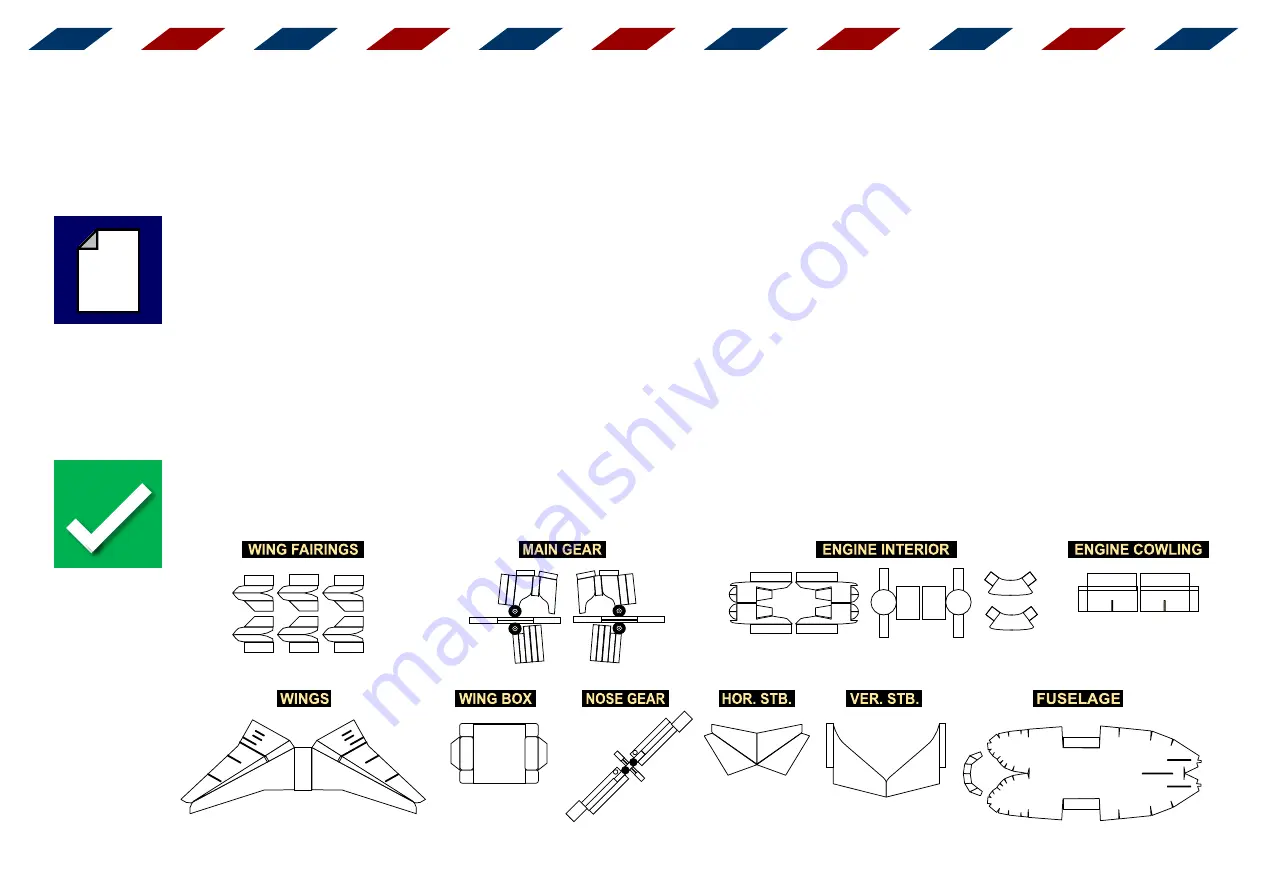
GETTING STARTED
PRINTING
The first step in building a paper model is, of course, the putting the design to paper. Some things to bear in mind:
•
Papier Avion / Airigami models are designed to fit A4 paper. Printing at 100% scale will produce models that are approximately 1:200 scale. However, you can use the scaling function
in Adobe Acrobat to either increase or decrease the scale. For example, if you adjusted Adobe Acrobat print settings to 50%, you would print models at 1:400 scale; similarly, if you
printed on A3 size paper and scale to 200%, you would print models at 1:100 scale.
•
We strongly recommend that Papier Avion / Airigami models be printed on heavier stock. We recommend glossy 80lbs paper
—
if the paper is too light (like normal office paper)
the models will tend to ’sag’; if the paper is too heavy, it may be too difficult to fold or manipulate in the building proce
ss. (Glossy paper also makes the models look nicer.)
KNOW-YOUR-PARTS
We try to make Papier Avion / Airigami instructions intuitive, using commonly used terms for each part.
Interior Turbines Exhaust

































